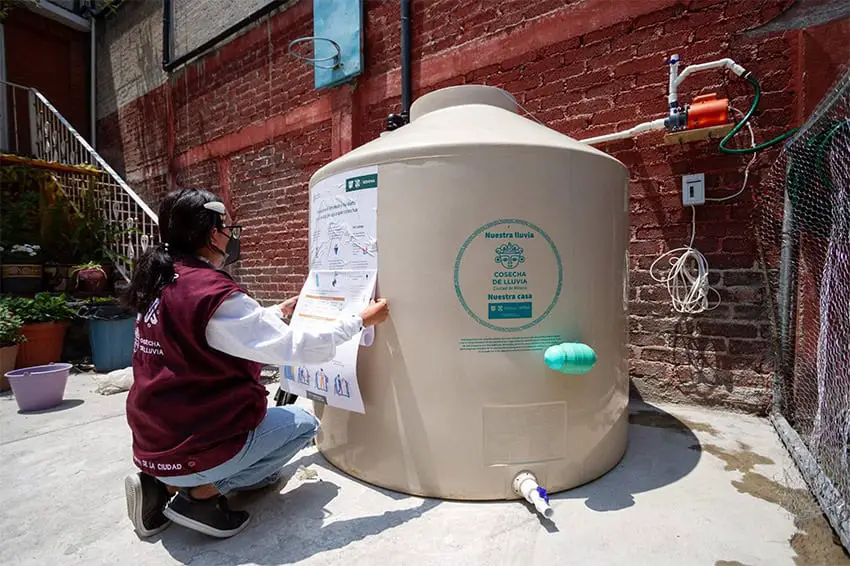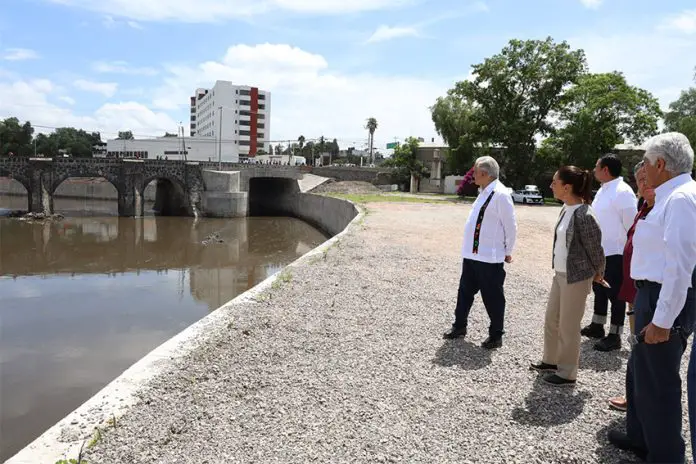President-elect Claudia Sheinbaum has pledged to implement an extensive water plan for central Mexico, one of various regions of the country affected by drought.
Speaking on Saturday at an event with President Andrés Manuel López Obrador and other officials in the municipality of Tlaxcoapan, Hidalgo, Sheinbaum said her government would work “hand in hand” on water issues with incoming Mexico City mayor Clara Brugada, México state Governor Delfina Gómez and Hidalgo Governor Julio Menchaca.
“We’re going to formulate a great water plan for the entire central area of the country and we’re going to revive the Tula River,” she said.
“We’re going to do a big clean-up of the Tula River,” Sheinbaum said, adding that the river in Hidalgo will consequently have the “viability” to be used as a source for drinking water, “which is also a right for the entire central region of the country.”
The Tula River has been plagued by contamination problems for decades as wastewater from the Valley of Mexico flows into it.
Ensuring the ongoing supply of water will be a major challenge for the government led by Sheinbaum, who will be sworn in as Mexico’s first female president on Oct. 1.

The metropolitan area of Mexico City is one part of the country where supply is a major concern. Many areas have limited or no access to running water and depend on water deliveries. What’s more, the capital’s primary water source could run out in 40 years, according to experts from the National Autonomous University’s Water Network.
Brugada, who easily won the June 2 mayoral election, has pledged to work with Sheinbaum and Governor Gómez to solve Mexico City’s water scarcity problem. She has promised to create a water-focused ministry in Mexico City, expand the capital’s rainwater harvesting program and establish a new program for the “rehabilitation” of 11 water sources, among other measures.
Sheinbaum’s water plan for Mexico
Sheinbaum has acknowledged the need to decontaminate rivers across Mexico, and has committed to ensuring that water is used more efficiently.
“Water is a vital resource for Mexico — it’s needed not just for household and workplace consumption, but also for our food security, economic development, energy generation and public health care,” she wrote in the “100 pasos para la transformación” (100 Steps for Transformation) document she released earlier this year.
In that document, Sheinbaum acknowledged that Mexico is going through a “prolonged drought.” However, she asserted that a future in which there is enough water for everyone — “without the need to overexploit” water sources — is possible.
“That future requires us to … rethink the rules that govern the [water] sector and to implement different solutions based on technology,” she wrote.

“… We must review the laws to protect the human right to water, allocate water use rights fairly and ensure that water continues to be an asset of Mexico,” Sheinbaum continued.
She said there are “two fundamental pillars” in the water sector — “the efficient use of water in the countryside through the implementation of technology, and the use of treated water in order to divert first-use [potable] water to cities.”
Sheinbaum added that agriculture accounts for 76% of water usage in Mexico, and highlighted that the “efficiency” of the sector’s usage of the resource is “low.”
“… By making water usage more efficient in the countryside, we can release a substantial quantity of water for human consumption, particularly in cities adjoining irrigation districts,” wrote the president-elect, an environmental scientist.
In her “100 steps for transformation” document, Sheinbaum also expressed support for desalination projects provided they don’t have an adverse effect on marine ecosystems. She also acknowledged that more infrastructure needs to be built in order to “resolve water supply problems.”
Mexico News Daily
